Hello everyone, thank you for the support for this site! We’ve been receiving likes and followers, which has been a huge source of delight and motivation! 😀 Can’t wait to read and like your posts as well!
This is just a short post before I sleep, and it’s the first post in my Mong Kok ‘saga’ lol. I went to Mong Kok to have dinner with two lovely girlfriends last Friday, and one of them chose the restaurant (Ocio–it was great!) because it is near the older part of the district, so as to facilitate my photo-taking sessions 🙂
Right after dinner, we took a right turn and this red neon sign caught my eyes (yes, ever since I started to embark on this blogging journey I’ve become sensitive to such signs haha):
(And no, the two girls in the photo aren’t my girlfriends lol They are real potential customers–staged photos are not really my cup of tea, at least not when I’m writing on this blog 😉 )
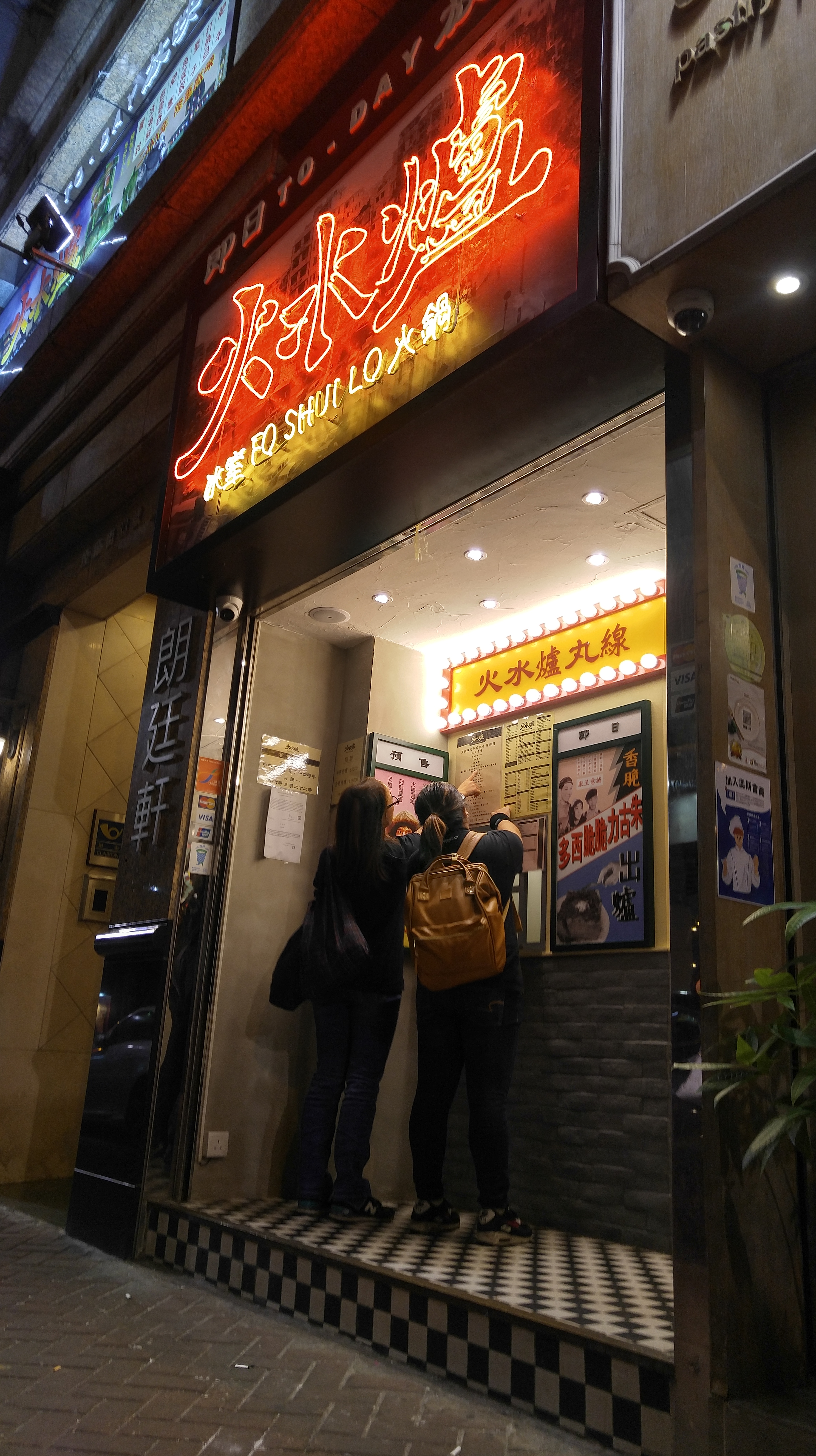
Isn’t this reminiscent of the building interiors of Hong Kong in the 70s-80s or so? 😀 It looks as if it just popped out of a photo in the past, or parts of the Hong Kong Museum of History Permanent Exhibition came to life. The black and white checkered floor, the font of the words, the light bulbs surrounding the sign that says “Fo Shui Lo Vermicelli with Meatballs”, and the posters, etc. are all characteristic of the shops in the olden days!
“Fo Shui Lo” makes an interesting shop name as well, because before there were stoves powered with gas, people used kerosene/ paraffin oil, which is called “fo shui” (literally “fire water” in Cantonese). “Lo” means stove, and hence the name of the shop means kerosene stove. I’m not sure whether that kind of stove would support huge fires (and I suppose not); all I know is that this kind of stove is not only characteristic of old Hong Kong but has a very characteristic pungent stench as well. My mom has god-parents and we used to visit them in their small flat in a tenement building in Mong Kok, where you have to pull open elevator doors and press buttons that protruded from the board like rows of sugar cubes. The first thing that comes to my mind when thinking of them is always the smell of their kerosene stoves, which was so acrid in my memory that my eyes teetered on the edge of tearing up in the first few minutes of being in their flat… But ah well now that has become a memory, a piece of puzzle in my limited real-life experience in authentic old Hong Kong flat.
Going back to that special restaurant, even though I was not born yet at that time where the “old Hong Kong” thrived, I have watched local films from that period, and it has become a part of me, so naturally I felt excitedly nostalgic when seeing this, as if it was my chance to travel back to the past.
Let’s take another look:
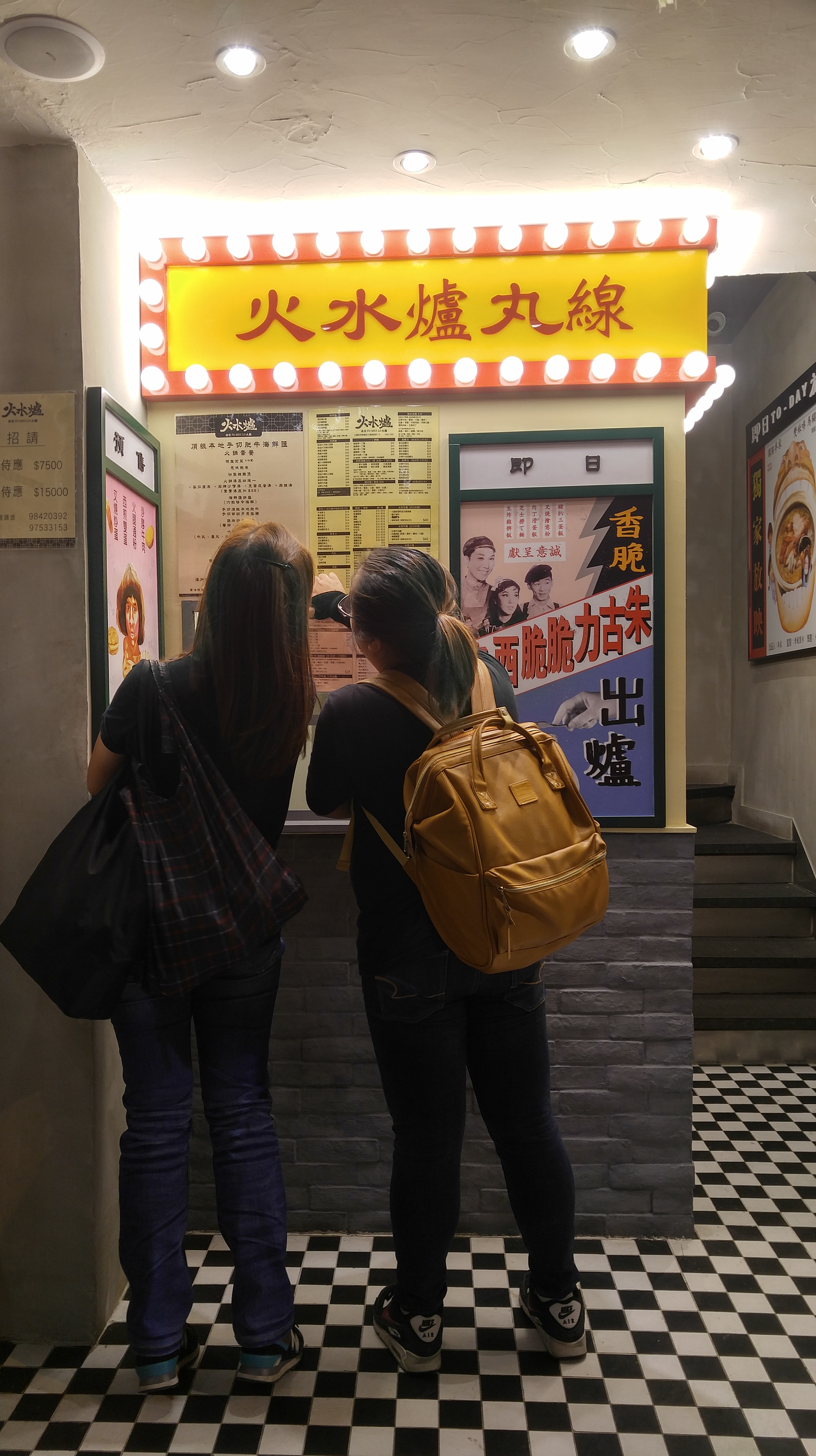
(The biggest poster in the middle-right looks like a film poster in the 50-60s, but it is actually selling crispy and aromatic chocolate toast that is fresh from the oven, mmm… 🙂 The paper with smaller words look like movie schedules, but it is actually menus)
And below we can see most posters lining the wall of a staircase… Again, they are made to look like movie posters inside cinemas (The white words on the black frame say “showing…today”), but the “show” is in fact food, such as noodles with satay beef, as in the poster nearer us:
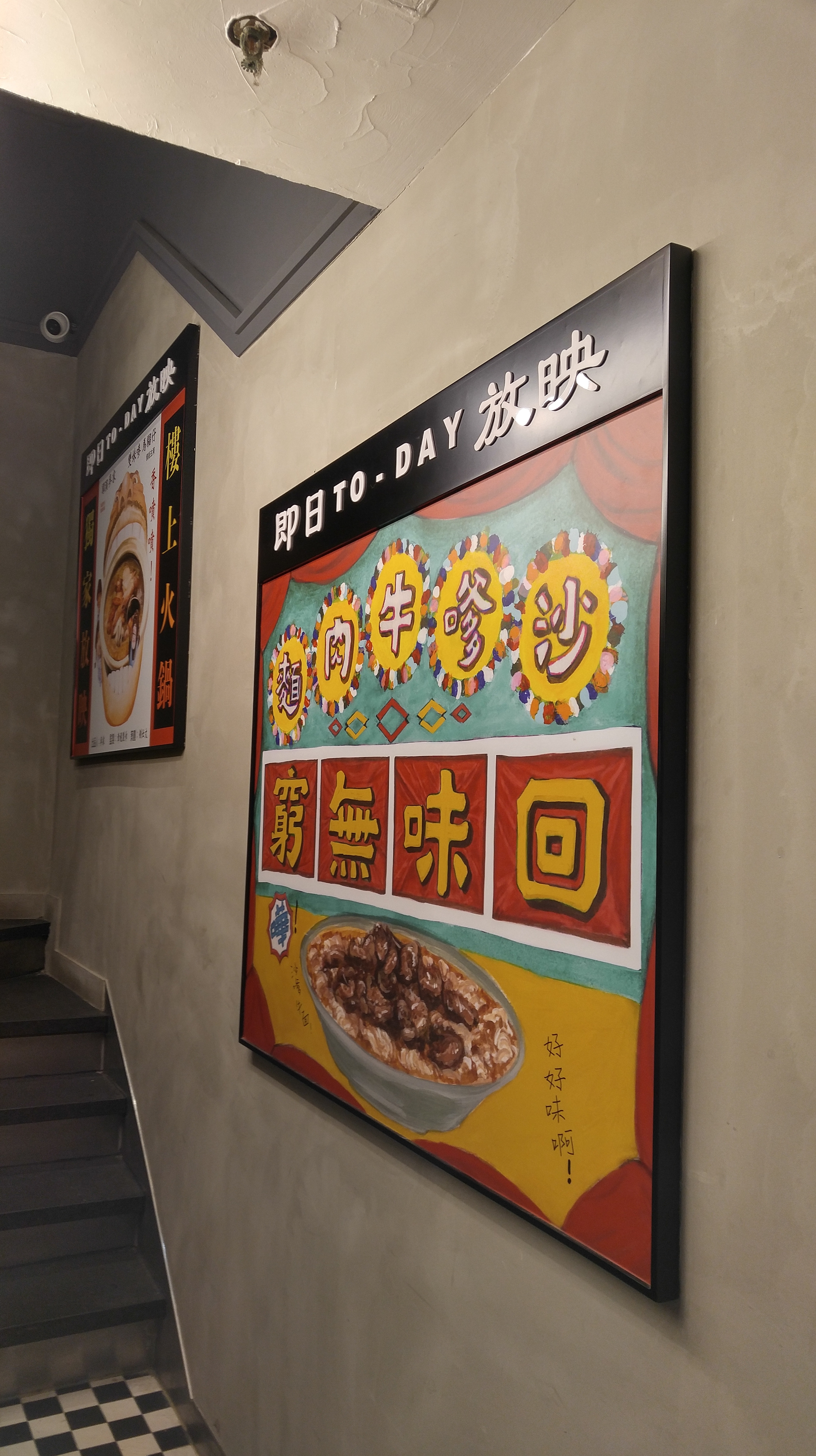
I realised I should have gone up them stairs and taken photos of the restaurant as well… and confirm my expectation that while the interior would probably resemble those of real restaurants decades ago, it would feel rather unreal…
Indeed, even though the entrance is beautifully made, it felt a bit surreal to look at it, because we know it is after fake… In other words, it is a simulacrum of the past that can never truly be alive again… It reminds me of the “Hong Kong area” at Ocean Park Hong Kong, where a lot of effort was clearly put in to recreate the impression of old Hong Kong, but even tourists can tell they are fake…
I managed to dig up a few photos of Ocean Park from 2014 (sorry for the poor quality) for you to make a comparison:
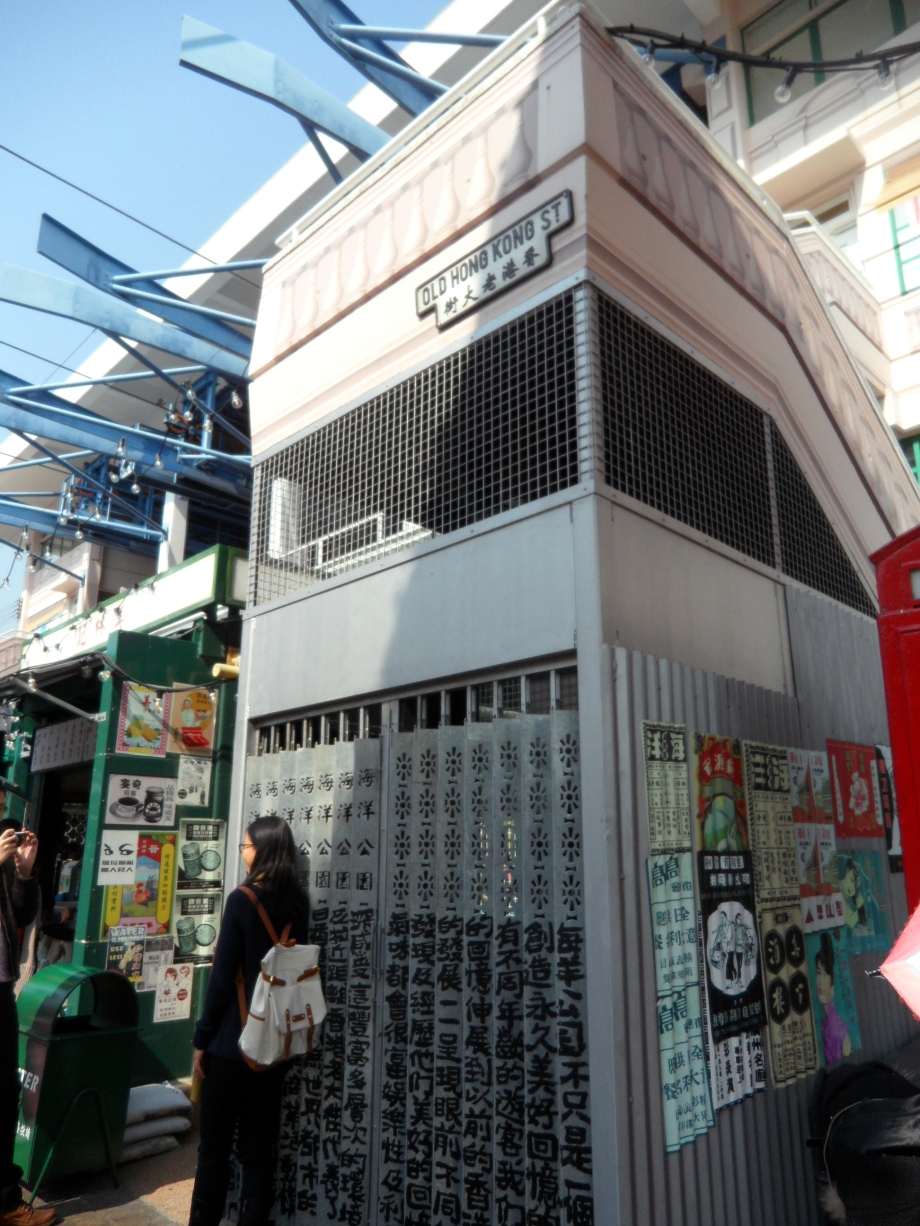
A recreated tea shop with many birdcages:

And lastly, the view of those ‘old streets’ at night…
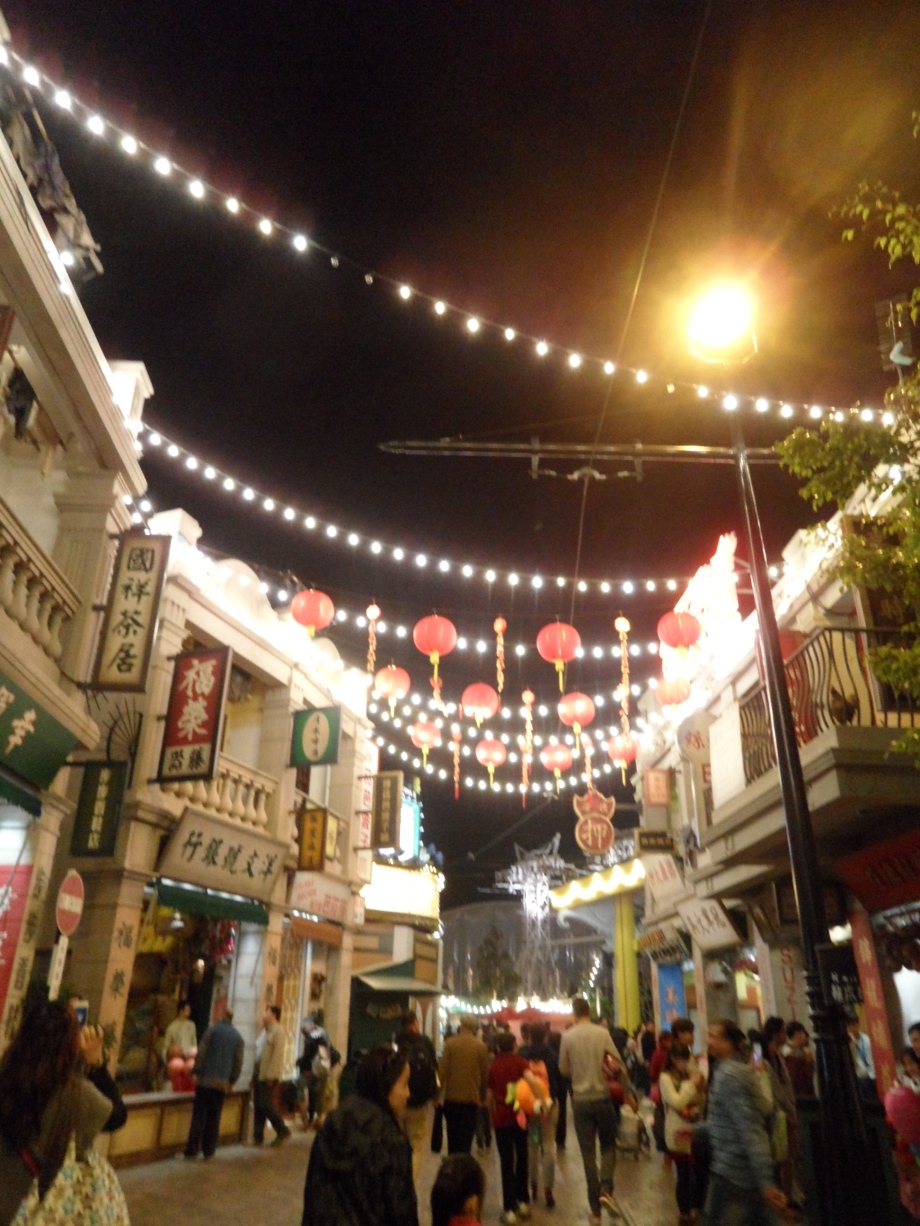
The resemblance is there alright, but are they real?
They are real in their physical presence (i.e. you can touch those tangible constructs), but (unfortunately) no, they are not the real Hong Kong.
So my question is: why do we still strive to recreate it, even in food? And what does the past mean?
Psychology has a theory that if one keeps reminiscing the past, s/he is not happy about the present. Could it be that in this age where virtual worlds seem to be much more appealing and yet psychologically harmful than the real world (thanks to modernisation and globalisation), Hong Kongers feel the need/ urge to revisit the past to retrieve parts of their lost selves/ identities? Has Hong Kong developed too quickly for locals to get used to, or are the new tastes still losing to the tastes of childhood?
In this sense, perhaps this also explains why street food never gets old–it reminds people of the olden days and thus there is a necessity for it to remain in the food market… And, as the (now cliche) saying goes, “Meet new friends but keep the old, one is silver and the other is gold”. Perhaps the taste buds do have a taste for the old.
PS: Oops, I didn’t expect this supposed-to-be short post to have almost a thousand words 😛 Thank you for reading! ❤
